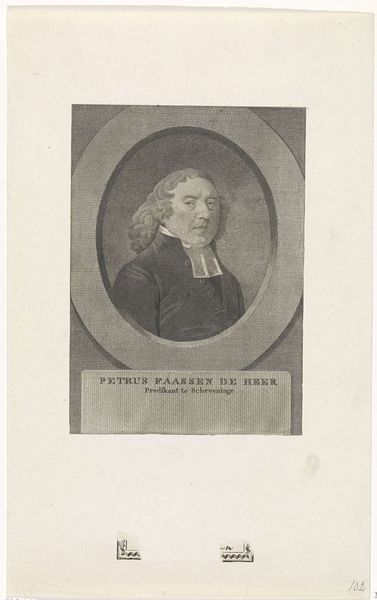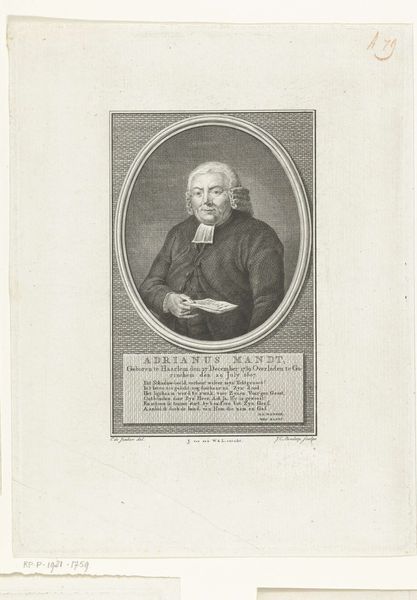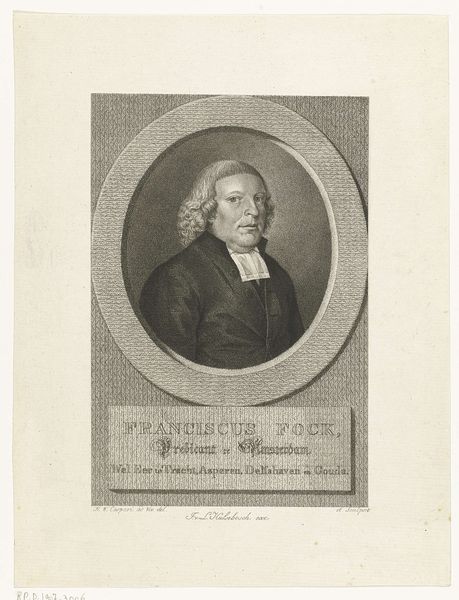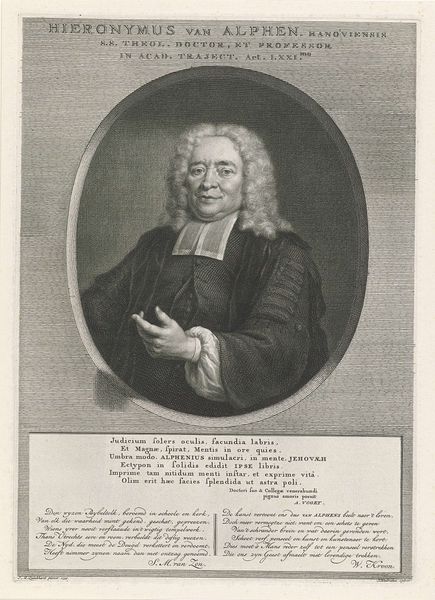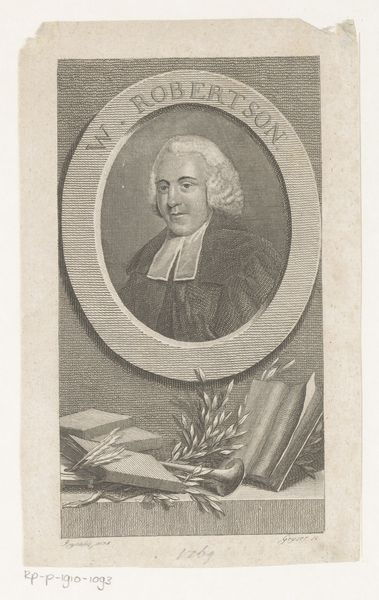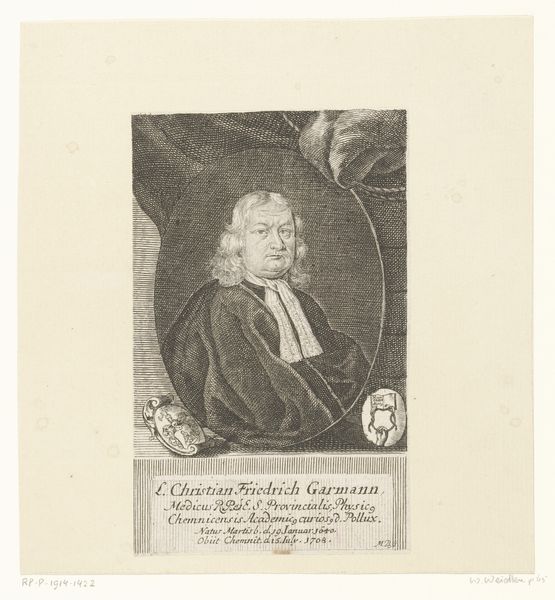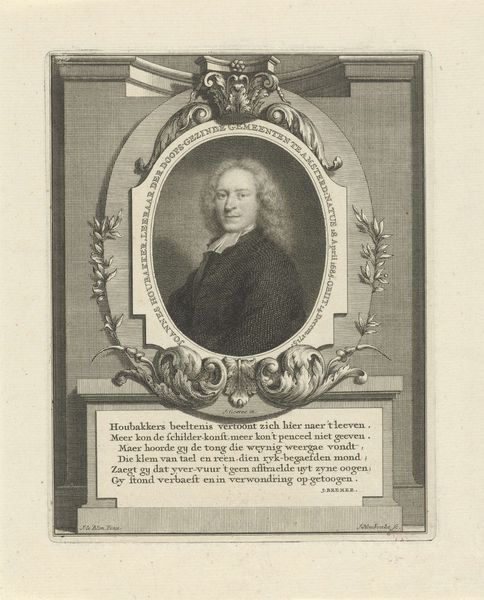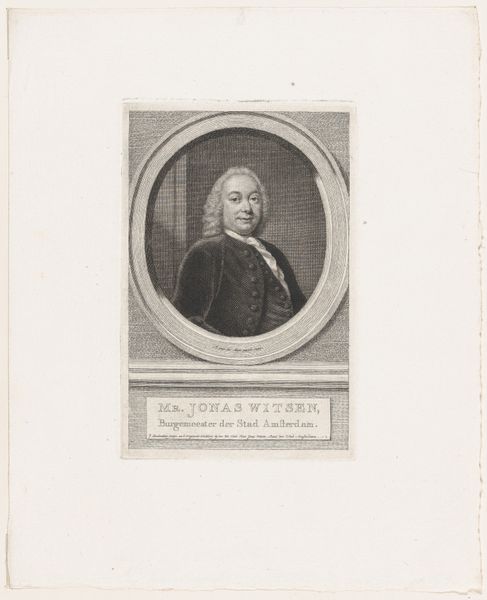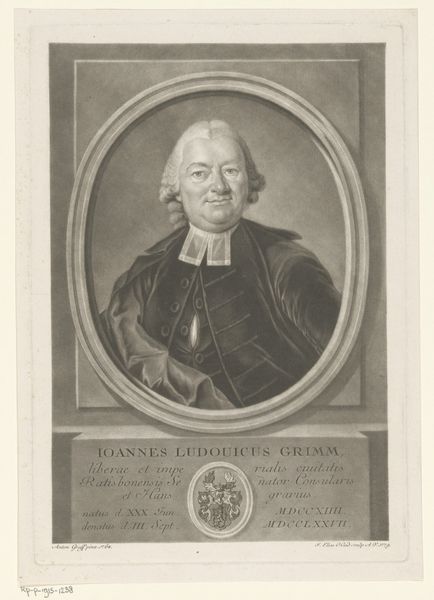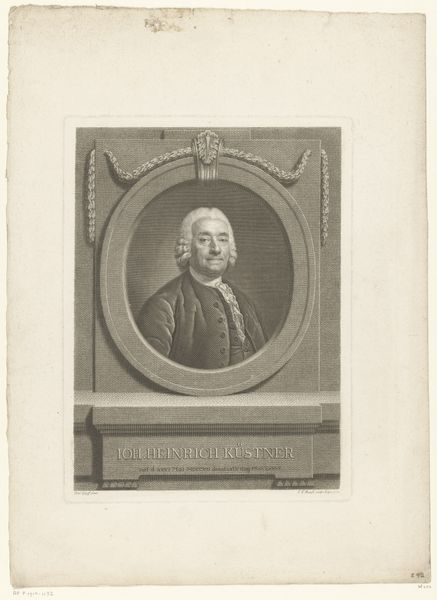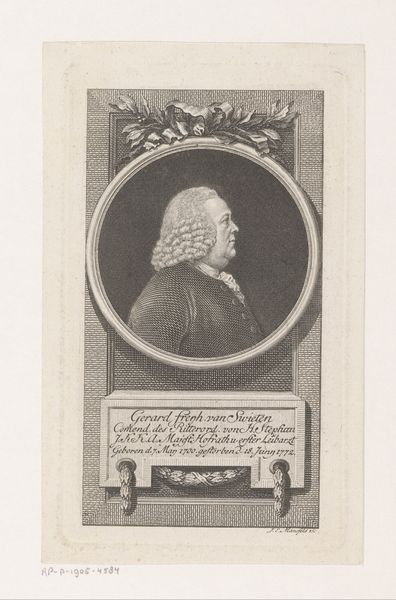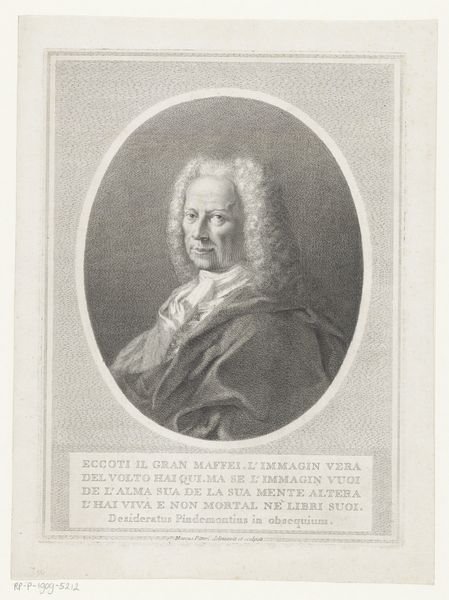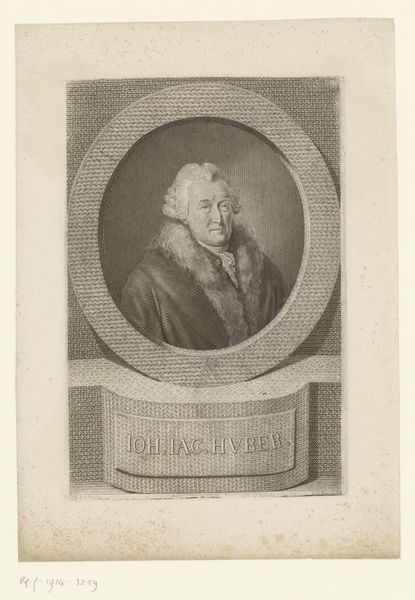
print, engraving
#
portrait
#
neoclacissism
# print
#
old engraving style
#
history-painting
#
academic-art
#
engraving
#
realism
Dimensions: height 254 mm, width 189 mm
Copyright: Rijks Museum: Open Domain
Editor: This engraving from 1799 depicts Petrus Faassen de Heer. I’m really struck by the level of detail in his face; he looks both intelligent and kind. How should we contextualize this work? Curator: This print serves as an important record of social status and institutional power during a period of significant change. How does the depiction of Petrus, specifically, signal something about the public role he occupied? Editor: Well, his clothing immediately marks him as a religious figure, a preacher. His rather plain attire also feels indicative of his position. Curator: Exactly. The Neoclassical style of the portrait reinforces the sitter’s authority through its restrained elegance. Do you notice any clues in the lettering accompanying the portrait? Editor: Yes, it identifies him as a preacher in Scheveningen. Also, there is what seems to be a poem celebrating him. How would prints like this have circulated and been received by the public? Curator: Prints like these were often commissioned and distributed within specific communities to celebrate and memorialize important figures, functioning almost as public service announcements. This image and others served to solidify reputations and underscore the prevailing social hierarchies of the era. It reinforced the power structures that were dominant within Dutch society at that time. Editor: I hadn’t thought about the circulation and the kind of ‘PR’ function a portrait like this would serve! Curator: Precisely! It sheds light on how art actively participated in shaping social perception. Editor: Thanks, that really helps me understand this image within its broader context.
Comments
No comments
Be the first to comment and join the conversation on the ultimate creative platform.
